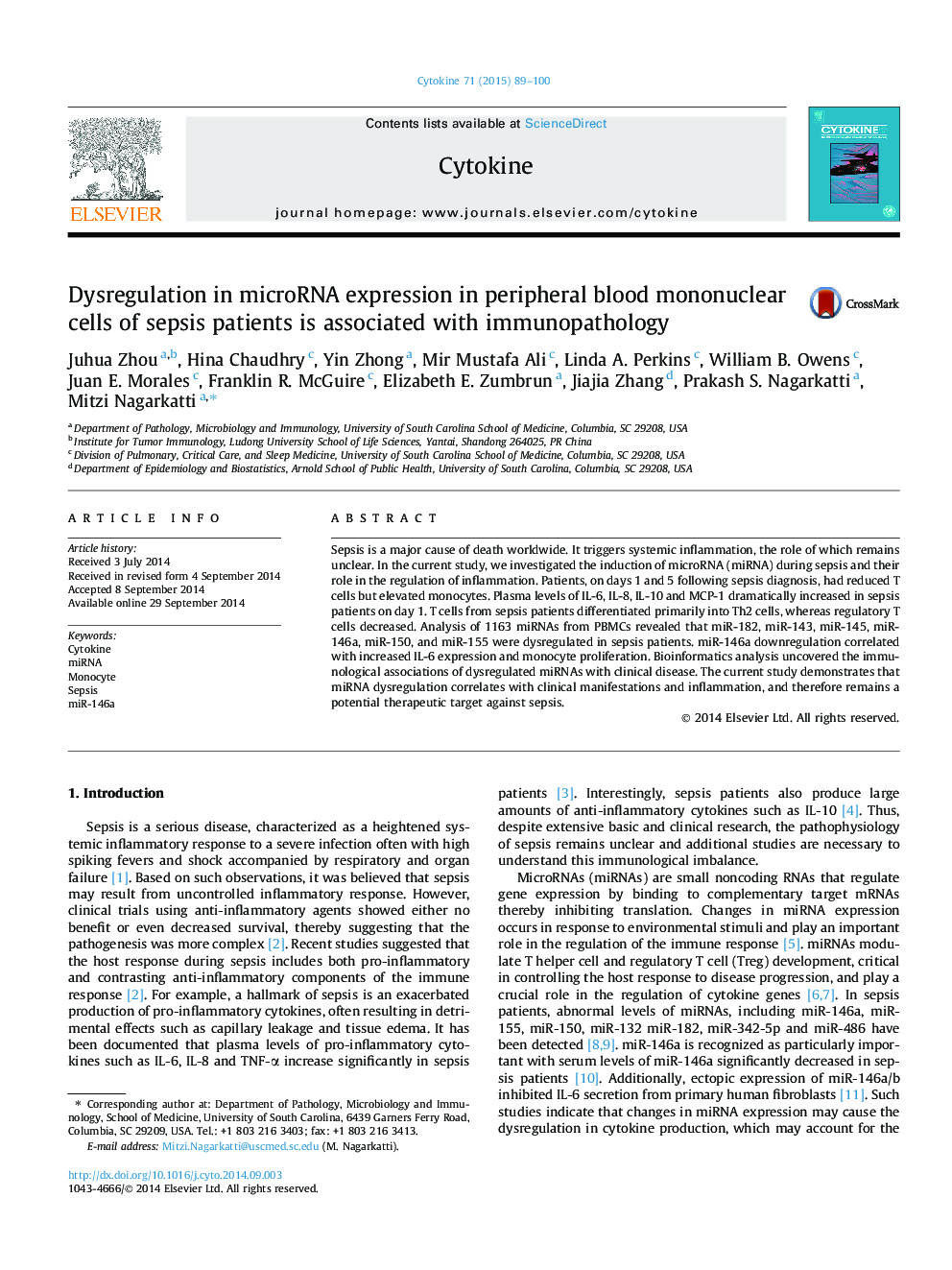| Article ID | Journal | Published Year | Pages | File Type |
|---|---|---|---|---|
| 5897065 | Cytokine | 2015 | 12 Pages |
â¢Sepsis patients had elevated monocytes and plasma IL-6, IL-8, IL-10 and MCP-1.â¢Th2 cells from sepsis patients increased and Tregs decreased.â¢miRs-182, -143, -145, 146a, -150 and -155 were dysregulated in sepsis patients.â¢miR-146a decrease correlated with elevated IL-6 and monocyte proliferation.â¢Dysregulated miRs have immunological associations with clinical disease in sepsis.
Sepsis is a major cause of death worldwide. It triggers systemic inflammation, the role of which remains unclear. In the current study, we investigated the induction of microRNA (miRNA) during sepsis and their role in the regulation of inflammation. Patients, on days 1 and 5 following sepsis diagnosis, had reduced T cells but elevated monocytes. Plasma levels of IL-6, IL-8, IL-10 and MCP-1 dramatically increased in sepsis patients on day 1. T cells from sepsis patients differentiated primarily into Th2 cells, whereas regulatory T cells decreased. Analysis of 1163 miRNAs from PBMCs revealed that miR-182, miR-143, miR-145, miR-146a, miR-150, and miR-155 were dysregulated in sepsis patients. miR-146a downregulation correlated with increased IL-6 expression and monocyte proliferation. Bioinformatics analysis uncovered the immunological associations of dysregulated miRNAs with clinical disease. The current study demonstrates that miRNA dysregulation correlates with clinical manifestations and inflammation, and therefore remains a potential therapeutic target against sepsis.
